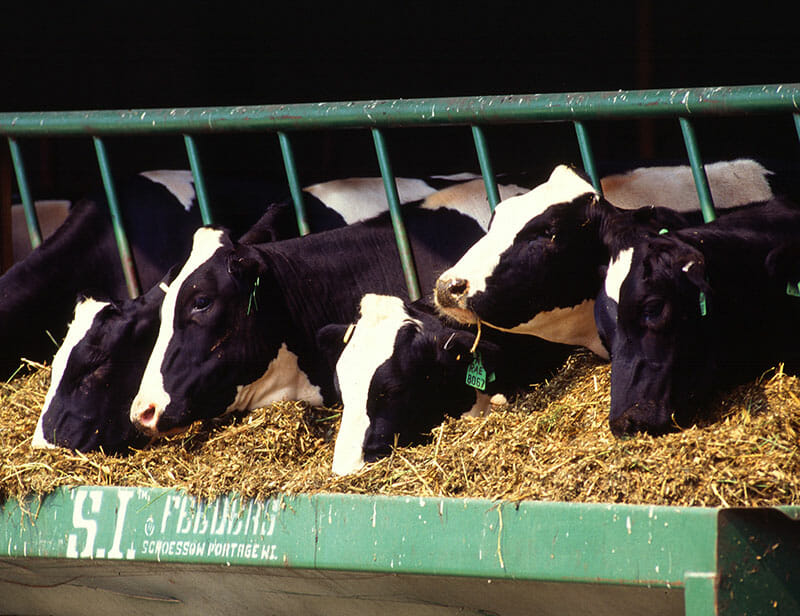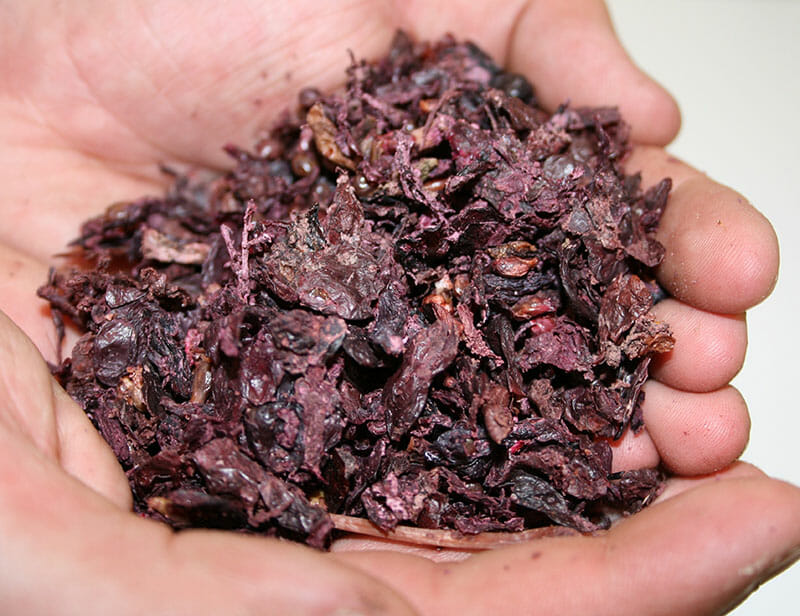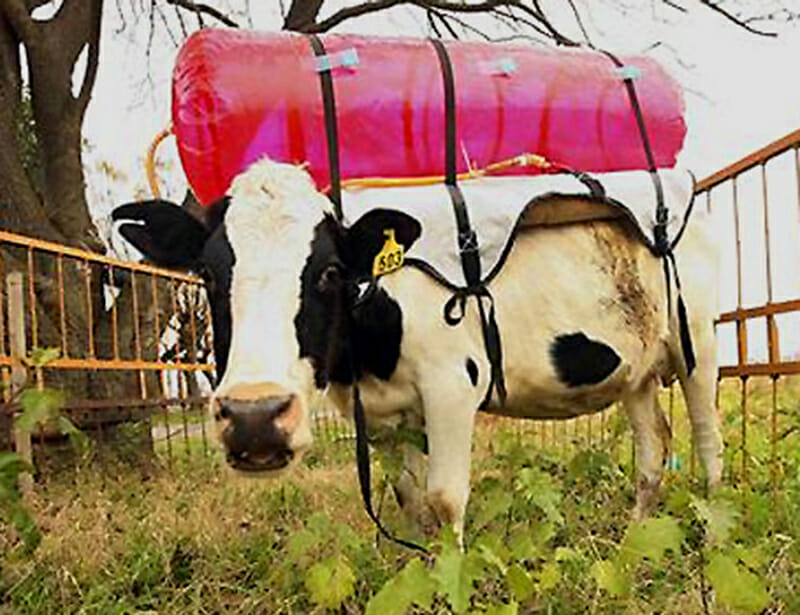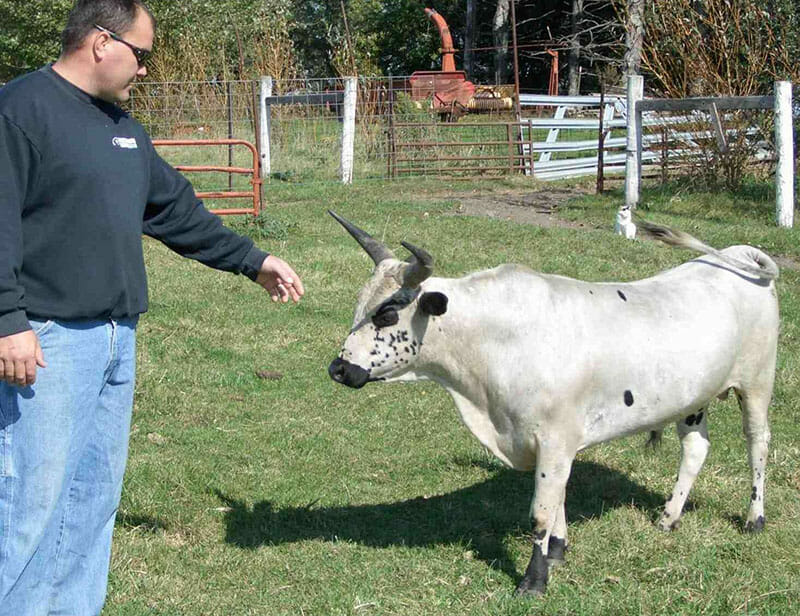6 Ways to Fight the Menace of Cow Burps
Though carbon dioxide is the more common greenhouse gas, methane is 23 times as harmful — and cow flatulence is one of its main sources. Here are six things we could do to help ease cow digestion.
6 Ways to Fight the Menace of Cow Burps
Though carbon dioxide is the more common greenhouse gas, methane is 23 times as harmful — and cow flatulence is one of its main sources. Here are six things we could do to help ease cow digestion.


Of all the nutty ideas in this list, shifting cow feed is the most practical way to reduce methane emissions from cattle. Scientists working for Groupe Danone, the makers of Dannon yogurt, found feeding cows alfalfa and flax seeds — which mimic natural grasses — can reduce emission 18 percent compared to cheaper diets of corn and soy. Scientists suspect the greater number of omega-3 fatty acids in natural grasses help improve the fermentation process in a cow’s rumen.
Farmers who have tested the feeding technique also report that the new feed result in tastier milk and healthier cows.

Speaking of rumens, kangaroos also have one to help them ferment grass before it passes into other stomachs. But while cows burp large amounts of methane, kangaroos only belch tiny amounts of harmless acid. That has Australia’s Athol Klieve thinking he might able be to teach a cow’s foregut to act like a kangaroo’s by shifting its microbial composition.

Why use artificial selection to adjust color, shape and size when you can breed a cow to be less gassy? Stephen Moore, a professor at the University of Alberta in Edmonton, started examining cow genetics in 2009. In primary tests, Moore managed to breed cattle that produced 25 percent less methane than an average cow. He achieved the results through breeding the cows to grow faster — thus reducing the amount of time they have to burp on the feed lot — and improving the efficiency by which they turn food into muscle.

Nothing like a nice feed bucket of wine byproducts to ease a cow’s stomach. A 2011 study from the Victoria Department of Primary Industries in Australia found that feeding cows grape pomace — the stems, seeds and skins from wine grapes — reduced methane emissions from cattle by 20 percent. The feed also increased the number of nutritional fatty acids in the cow’s milk.
In a related effect, Canadian rancher Jandince Ravndahl began feeding her Angus cows one liter of homemade red wine each day. The cow cocktails improve the meat texture and reduce greenhouse emissions from the livestock. According to Ravndahl, the cows also moo more and seemed relaxed.

No one wants to attach balloons to cows as a practical solution to the methane problem, but the National Institute of Agricultural Technology did just that as a part of a 2008 study on livestock. Results from the burp backpacks revealed that 30 percent of Argentina’s greenhouse emissions could be generated from cow gas.

Before passing away in 2011, Professor Richard Gradwhol helped to create 18 new breeds of miniature cattle on his farm outside Seattle, Wash. Not only did the miniature cows produce excellent beef on a small plot of land (the animals are 25 to 30 percent more feed efficient), but Gradwhol found that they also passed a much more polite amount of gas. One needs a collection of 10 minicows to produce the same amount of methane a full-sized beef hefer. The itty-bitty bulls and cows have become much more popular in the U.S. with the rise of hobby farming.
Follow us
This work is licensed under a Creative Commons Attribution-NoDerivatives 4.0 International License.
Want to republish a Modern Farmer story?
We are happy for Modern Farmer stories to be shared, and encourage you to republish our articles for your audience. When doing so, we ask that you follow these guidelines:
Please credit us and our writers
For the author byline, please use “Author Name, Modern Farmer.” At the top of our stories, if on the web, please include this text and link: “This story was originally published by Modern Farmer.”
Please make sure to include a link back to either our home page or the article URL.
At the bottom of the story, please include the following text:
“Modern Farmer is a nonprofit initiative dedicated to raising awareness and catalyzing action at the intersection of food, agriculture, and society. Read more at <link>Modern Farmer</link>.”
Use our widget
We’d like to be able to track our stories, so we ask that if you republish our content, you do so using our widget (located on the left hand side of the article). The HTML code has a built-in tracker that tells us the data and domain where the story was published, as well as view counts.
Check the image requirements
It’s your responsibility to confirm you're licensed to republish images in our articles. Some images, such as those from commercial providers, don't allow their images to be republished without permission or payment. Copyright terms are generally listed in the image caption and attribution. You are welcome to omit our images or substitute with your own. Charts and interactive graphics follow the same rules.
Don’t change too much. Or, ask us first.
Articles must be republished in their entirety. It’s okay to change references to time (“today” to “yesterday”) or location (“Iowa City, IA” to “here”). But please keep everything else the same.
If you feel strongly that a more material edit needs to be made, get in touch with us at [email protected]. We’re happy to discuss it with the original author, but we must have prior approval for changes before publication.
Special cases
Extracts. You may run the first few lines or paragraphs of the article and then say: “Read the full article at Modern Farmer” with a link back to the original article.
Quotes. You may quote authors provided you include a link back to the article URL.
Translations. These require writer approval. To inquire about translation of a Modern Farmer article, contact us at [email protected]
Signed consent / copyright release forms. These are not required, provided you are following these guidelines.
Print. Articles can be republished in print under these same rules, with the exception that you do not need to include the links.
Tag us
When sharing the story on social media, please tag us using the following: - Twitter (@ModFarm) - Facebook (@ModernFarmerMedia) - Instagram (@modfarm)
Use our content respectfully
Modern Farmer is a nonprofit and as such we share our content for free and in good faith in order to reach new audiences. Respectfully,
No selling ads against our stories. It’s okay to put our stories on pages with ads.
Don’t republish our material wholesale, or automatically; you need to select stories to be republished individually.
You have no rights to sell, license, syndicate, or otherwise represent yourself as the authorized owner of our material to any third parties. This means that you cannot actively publish or submit our work for syndication to third party platforms or apps like Apple News or Google News. We understand that publishers cannot fully control when certain third parties automatically summarize or crawl content from publishers’ own sites.
Keep in touch
We want to hear from you if you love Modern Farmer content, have a collaboration idea, or anything else to share. As a nonprofit outlet, we work in service of our community and are always open to comments, feedback, and ideas. Contact us at [email protected].by Sam Brasch, Modern Farmer
January 7, 2014
Modern Farmer Weekly
Solutions Hub
Innovations, ideas and inspiration. Actionable solutions for a resilient food system.
ExploreExplore other topics
Share With Us
We want to hear from Modern Farmer readers who have thoughtful commentary, actionable solutions, or helpful ideas to share.
SubmitNecessary cookies are absolutely essential for the website to function properly. This category only includes cookies that ensures basic functionalities and security features of the website. These cookies do not store any personal information.
Any cookies that may not be particularly necessary for the website to function and are used specifically to collect user personal data via analytics, ads, other embedded contents are termed as non-necessary cookies.